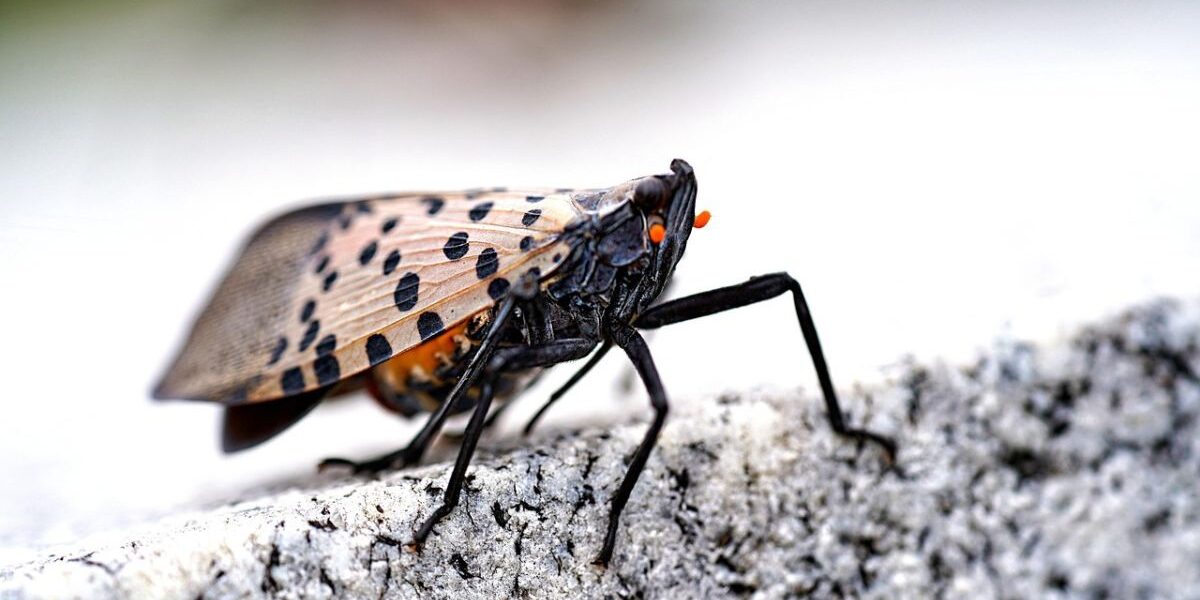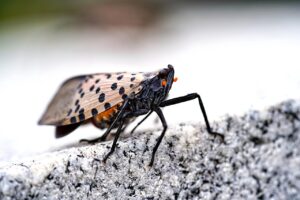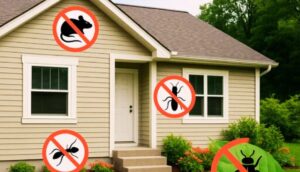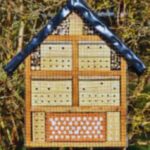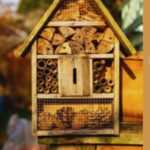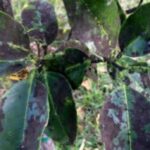How To Remove Spotted Lanternfly Egg Masses From Trees (Without Harming Your Landscape)
What Do Spotted Lanternfly Egg Masses Look Like?
Before you can remove egg masses, you need to know what you’re looking for. The eggs of these bugs are laid in masses and are grayish-brown and about 1 to 1.5 inches long. They resemble dried mud or smudges of wet clay. These masses harden over time and often crack slightly on the surface.
They can be found:
-
On tree trunks
-
Under loose bark
-
On smooth surfaces like rocks, fences, grills, even car tires!
One female can lay up to two egg masses—each with about 30–50 eggs. That’s up to 100 new lanternflies in your yard from one bug!
When To Remove Spotted Lanternfly Egg Masses
Fall through early spring is prime time. These pests usually lay eggs in late September through December. The eggs then overwinter and hatch around the months of April or May.
To break the cycle, it’s crucial to remove them before they hatch.
Pro tip: Make egg scraping part of your fall and winter outdoor routine. Check trees, sheds, wood piles, and even your vehicles.
How To Remove Spotted Lanternfly Egg Masses From Trees: Step-by-Step
Here’s the effective, chemical-free way to get rid of lanternfly eggs.
1. Gather Your Tools
You’ll need:
-
A plastic card or putty knife (old credit cards work great)
-
A small scraper or spatula
-
A sealable plastic bag (like a Ziploc)
-
Rubbing alcohol or hand sanitizer (for the bag)
Avoid metal blades—they can damage the tree bark.
2. Find the Egg Masses
Walk around your trees and inspect the bark. Look for those mud-like smears. They may be flat or slightly raised. Check between cracks, tree under branches, and behind tree bark.
Don’t stop at trees. Lanternflies also lay eggs on:
-
Fences
-
Deck posts
-
Outdoor furniture
-
Sheds
3. Scrape With Care
Hold your plastic card or putty knife flat against the bark. Gently scrape underneath the egg mass, applying even pressure to remove it all in one piece.
The goal is to remove the entire egg mass—don’t just crush it and leave it on the tree. They can still hatch if not properly disposed of.
4. Seal and Destroy the Eggs
Place the egg mass into a plastic bag and thoroughly seal it. Add rubbing alcohol or hand sanitizer. This kills the eggs quickly and humanely.
Then zip it shut and toss it in the trash—not the compost.
Never leave eggs on the ground. They may still hatch and infest your yard.
5. Repeat Often
It’s not a one-and-done job. Inspect trees and surfaces regularly during the fall and winter months. Even one missed egg mass can produce dozens of pests.
Extra Tips To Make Egg Removal Easier
Want to go the extra mile? Here are a few tricks:
-
Mark trees where you find egg masses so you can check them again later.
-
Use duct tape to trap egg masses temporarily before scraping.
-
Get the kids involved—make it a backyard scavenger hunt.
-
Use a flashlight for better visibility on rough bark or shaded spots.
Remember, the earlier and more often you check, the fewer lanternflies you’ll deal with in spring.
Why Removing Egg Masses Matters
Let’s be real—ignoring these eggs can lead to big problems. Here’s what could happen if you don’t act:
-
Infestation explosion: One egg mass = up to 50 new pests.
-
Tree damage: These bugs feed on sap, weakening trees.
-
Sticky messes: Nymphs secrete honeydew that encourages black sooty mold.
-
Attracts other bugs: Like ants and wasps.
-
Crop loss: If you grow fruit, vegetables, or grapes, lanternflies can ruin them.
A few minutes of scraping now can save hours of stress later.
Natural Ways To Keep Spotted Lanternflies Away
Once you’ve removed the eggs, keep lanternflies from returning. Try these natural deterrents:
-
Tree banding: Use sticky tape to catch nymphs climbing up tree trunks.
-
Neem oil sprays: Organic and safe for gardens.
-
Remove Ailanthus trees: Also called Tree-of-Heaven, they’re a lanternfly favorite.
-
Encourage natural predators: Birds, spiders, and praying mantises help.
Even chickens have been known to peck a few of these bugs!
Frequently Asked Questions
1. Can I just crush the egg masses instead of scraping them?
Yes, but scraping into a bag with alcohol is far more effective. Crushing alone may leave viable eggs behind, especially if not thoroughly smashed.
2. What happens if I leave just one egg mass?
Each mass can hatch 30–50 lanternflies. That one “mud spot” could mean dozens of pests come spring.
3. Will scraping hurt the tree bark?
Not if done gently. The use of plastic tools will help to avoid gouging the bark. Scrapers that is made out of metal can harm the tree, so continue to use plastic tools.
4. Do lanternflies only lay eggs on trees?
Nope! besides tree trunks and branches they lay eggs on nearly any hard surface, including patio furniture, rocks, car tires, siding, and even firewood.
5. Can I use vinegar to kill egg masses?
Vinegar alone isn’t strong enough. It may weaken the mass but won’t reliably kill all eggs. Stick with rubbing alcohol or hand sanitizer.
6. What time of year do egg masses hatch?
Typically, eggs hatch in April or May, depending on your climate. That’s why removal is critical before spring hits.
7. Is it illegal to transport egg-covered materials?
In some states, yes. Spotted lanternflies are under quarantine in many regions. Check local regulations before moving firewood, vehicles, or outdoor gear.
8. Do all egg masses hatch successfully?
No, but a large percentage do—especially if left undisturbed. Environmental conditions can affect hatch rates, but it’s best to assume they’ll hatch if left alone.
9. Can I burn the egg masses instead of bagging them?
Burning is effective but not recommended due to fire risk. Bagging with alcohol is safer and just as lethal to the eggs.
10. What should I do if I find egg masses but can’t reach them?
Use an extension scraper or pole with a plastic blade. For high branches, consider contacting a local arborist or pest control professional.
Conclusion: Scrape Now, Save Your Trees Later
Spotted lanternflies are a serious problem—but you have the power to fight back. By learning how to remove their egg masses safely and consistently, you stop the next generation before it takes over your trees and yard.
Start today. Walk around your property, identify those muddy smears, and scrape them off with care. Seal them in a bag, destroy them with alcohol, and toss them out. Repeat the process each fall and winter to stay ahead.
A few minutes now could save your garden, trees, and sanity come spring.
Don’t wait for an infestation. Take control now. Your trees will thank you.
Have questions or need pest control tips for your yard? Check out more guides at bugoffcontrol.com to protect your home naturally.

